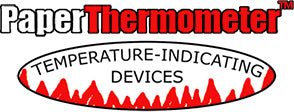What Factors Affect Reaching Sanitizing Temperature in a Commercial Dishwasher?

A commercial dishwasher needs to both clean and sanitize dishware. Achieving the second part can be more complex than you would expect. It is not as simple as setting wash and rinse water temperatures to the temperature required by the FDA Food Code. Here's a look at some of the elements that effect what temperature our dishes actually reach and how better understanding them can help you keep your food service customers safer.
Section 4-703.11 (B) of the FDA Food Code gives the requirements for temperatures in hot water sanitizing commercial dishwashers. This section states that you need to have a dish surface temperature reaching 71°C/160°F in order to sanitize effectively. It is this Food Code section that guides the use of temperature labels for dish sanitation.
The Food Code gives guidelines that the wash water temperature can be within and also a range for the final rinse water. The combination of the two water temperatures determine if the temperature measured on the dish surface will actually reach the FDA required temperature. This plus the influence of the factors listed below is where the complexity in sanitizing dishware in a commercial dishwasher comes from.
Load Composition
What types of items are in any particular load of dishes going through the dishwasher? Steel pans and ceramic dishes will absorb heat differently. How full is that load? These variables can help to influence the settings required to get that important 160°F dish surface temperature.
 Speed, Load Pattern
Speed, Load Pattern
What is your pattern for running the dishwasher? Is it a load every 5 minutes or one per half hour? This factor potentially has the greatest degree of influence on the temperature settings you will need to get your dishes sanitizing properly to 160°F (measured by a temperature label). The amount of time between loads greatly effects the actual temperatures that the two water/heat source are at during the dish cycle. The faster the time between loads, the lower the wash and to a lesser degree the final rinse water temperatures will be. Running a cycle of dishes will cause the wash water temperature to drop temporarily. This makes sense, we have cooler dishes being sprayed with the heated water, heating up the dishes and environment in the dishwasher at a loss to the temperature of the water. The dish machine heats the water back up, the amount of time before the next load can determine what temperature the wash water gets back to for the start of the cycle. The final rinse water behaves similarly however it is fresh water for each cycle and is a lower volume than the wash water so it usually heat up faster. Keep in mind that every dishwasher will behave somewhat differently.
First Cycle of the Day
When a commercial dishwasher is first turned on it will take some time for the water to come up to temperature. This cannot be rushed; there is no use trying to test sanitation temperature with a temperature label until the machine is fully up to temp. Certainly it would risky to run cycles of dishes before the machine has warmed up. It is also a good idea, once the water is up to temp, to run a cycle or two empty to warm up the inside of the machine before testing dish sanitation temperature and running actual cycles of dirty dishes.
So what to do in practice? With all of these factors and variability, how can I be sure that I will safely sanitize the dishware each run? The answer is you overshoot. Overshoot the temperature you desire so that when the dishwasher is running cycles of dishes through it, the temperature will be always reaching that temperature you need. So if you want a wash water temperature of 150°F, set it so that the machine will bring your water up to 160°F. If you want your rinse water at 180°F, set it to 185°F or 190°F. This way when you are sending through load after load of dishes on a busy night you ensure that the water temperatures are actually getting to where you need them to be to keep your customers safe. Just be sure to stay within the ranges allowable by the FDA Food Code.
*The above temperatures are current as of the date of writing. Required temperatures vary by machine type, those shown above are for a dual temperature type dishwasher.
One final thought: On the surface we are discussing following FDA regulations to be in compliance but let's not forget that ultimately we are really talking about the safety of your customers and avoiding issues that can harm business or cost you money.
